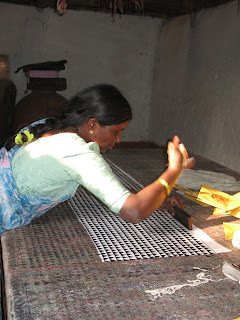A little trivia to start with – what is the official Indian tri-colour made off? I asked around and got quite a few wrong answers!! (hmmm…maybe a tad little more than few!! ;)) Not many knew that the Indian flag must be made of Khadi – blame it on all the plastic flags which are so widely available on the streets come Jan 26th or Aug 15th……
Khadi is not just a cloth, it’s a whole movement – said a wise soul. Mahatma Ghandhi used khadi to kick start the swadeshi movement while trying to bring down the british empire and its mass produced mill cloth.
Khadi over the decades has moved from being a freedom fighter’s identity fabric to a fashion garment. If earlier it was looked upon as a fabric for the farmer and the rural weaver; now Khadi has become a fashion statement. Khadi being handspun and hand woven cannot be mass produced quickly, demand constantly exceeds supply and hence the high rates of Khadi garments. However, there is one piece of khadi cloth that remains affordable and within reach of all…. The Khadi Indian Flag!!
I happened to visit a khadi production centre recently..not just any production centre it’s the ONLY authorized production centre for the Indian National Flag. The Karnataka Khadi Gramodyog Samyukta Sangha in Hubli, Karnataka was established in 1957 to help and guide the khadi instituitions across the state and to provide employment to the locals. Today one unit in this centre is exclusively involved in producing flags all year around. Though major orders come in around Independence Day and Republic day, the unit needs to keep working all year around to be able to fulfill the orders received.
The khadi cloth woven at various centres in north Karnataka is bought and dyed at their dyeing facility. Every batch of dyed cloth needs to be approved by the BIS to ensure that the colours comply with the standards set by the Government. The printing of Chakra is done under specialized machines. The cloth is then stitched into various different sizes of flags at an exclusive stitching centre.
Khadi flag can be bought at all khadi gramodyog sales outlets across all major cities in










